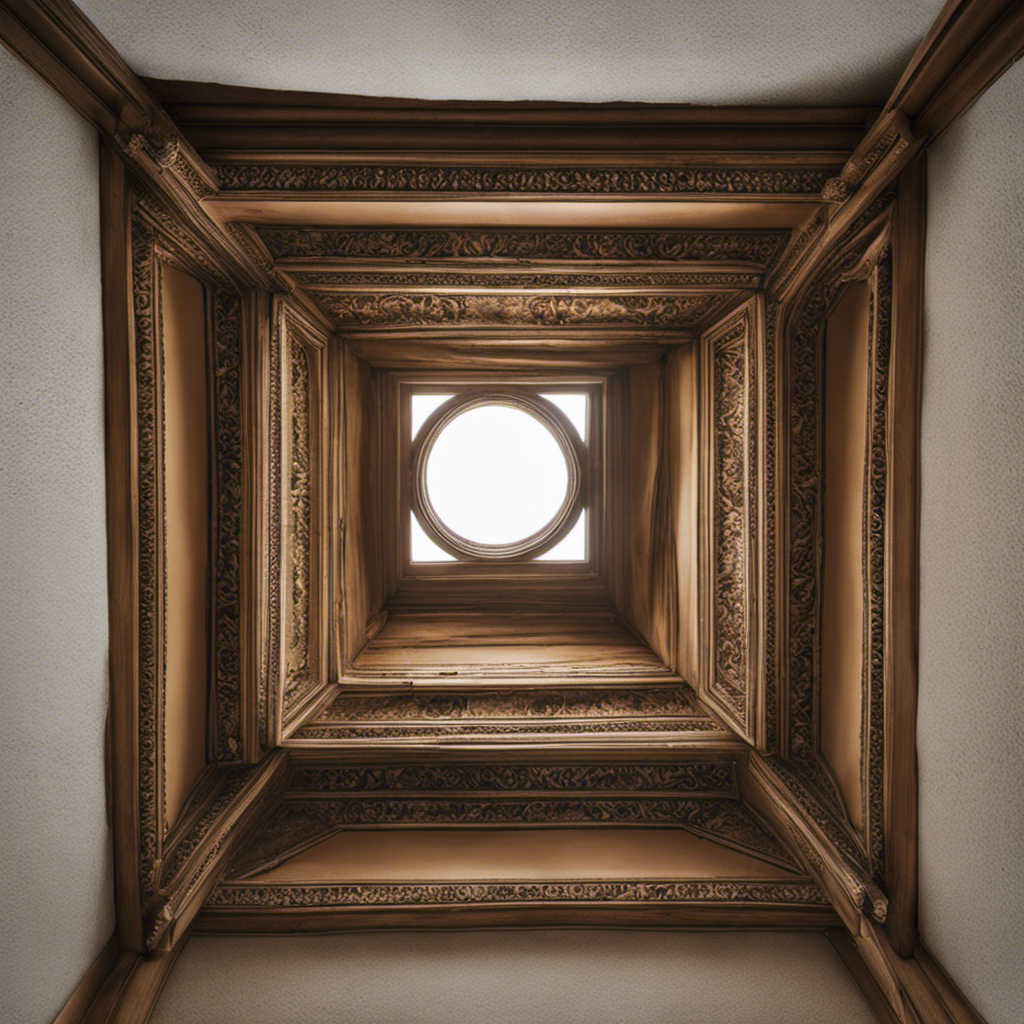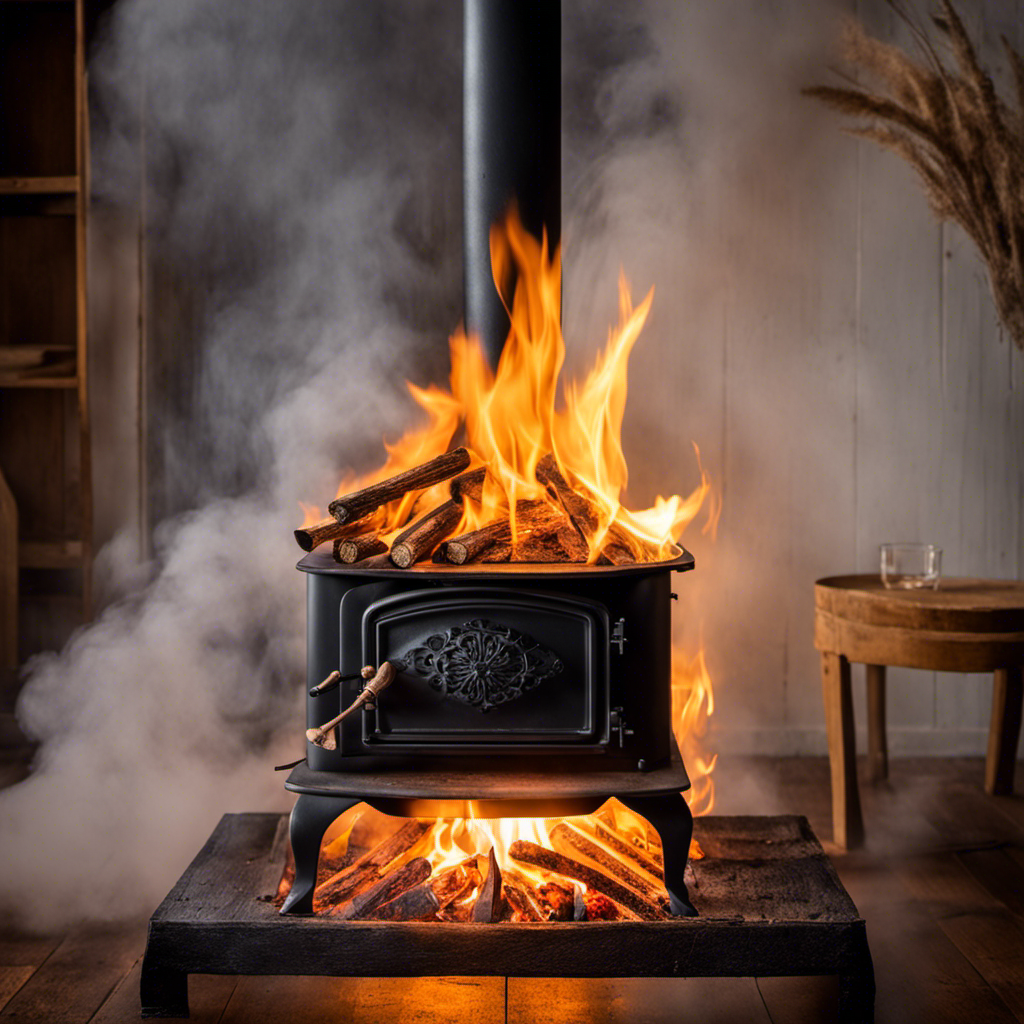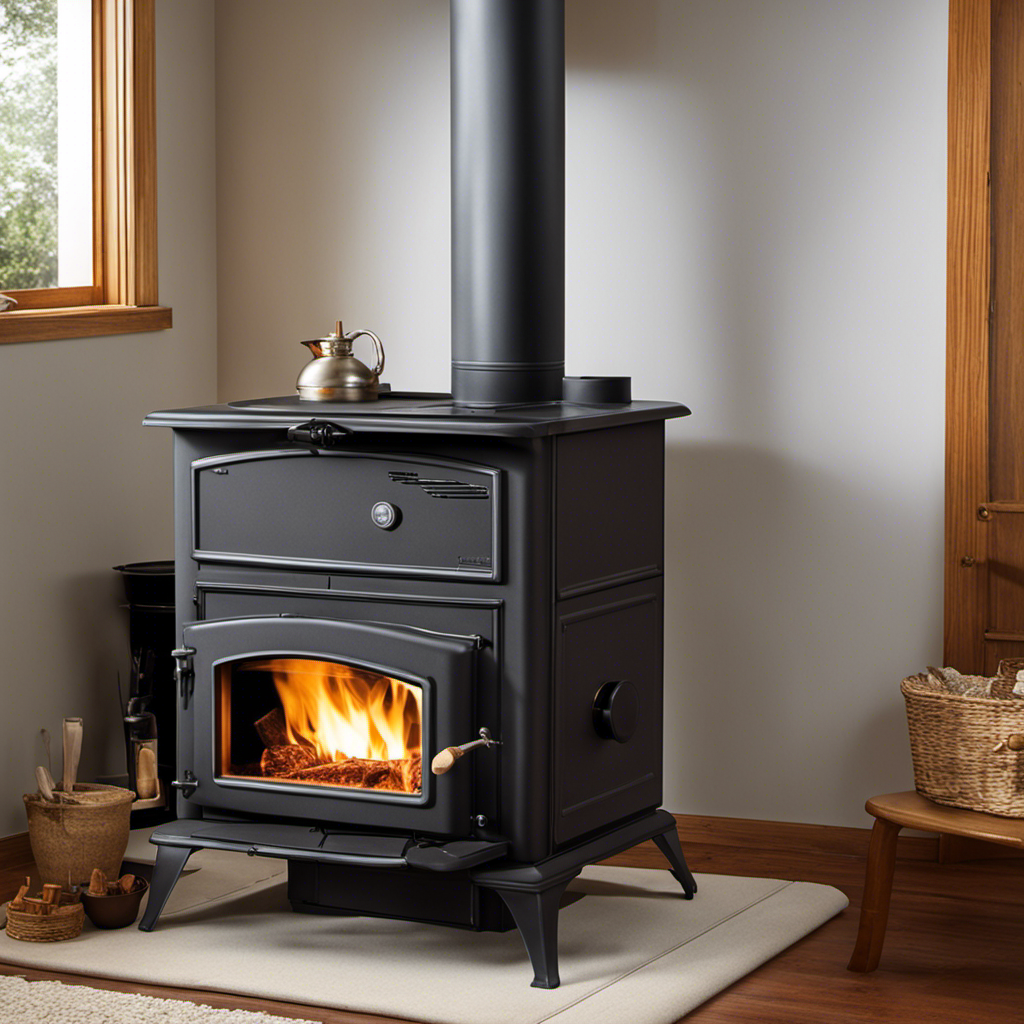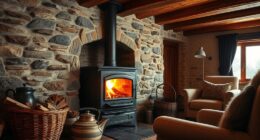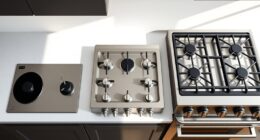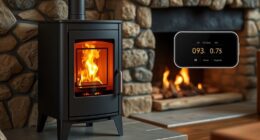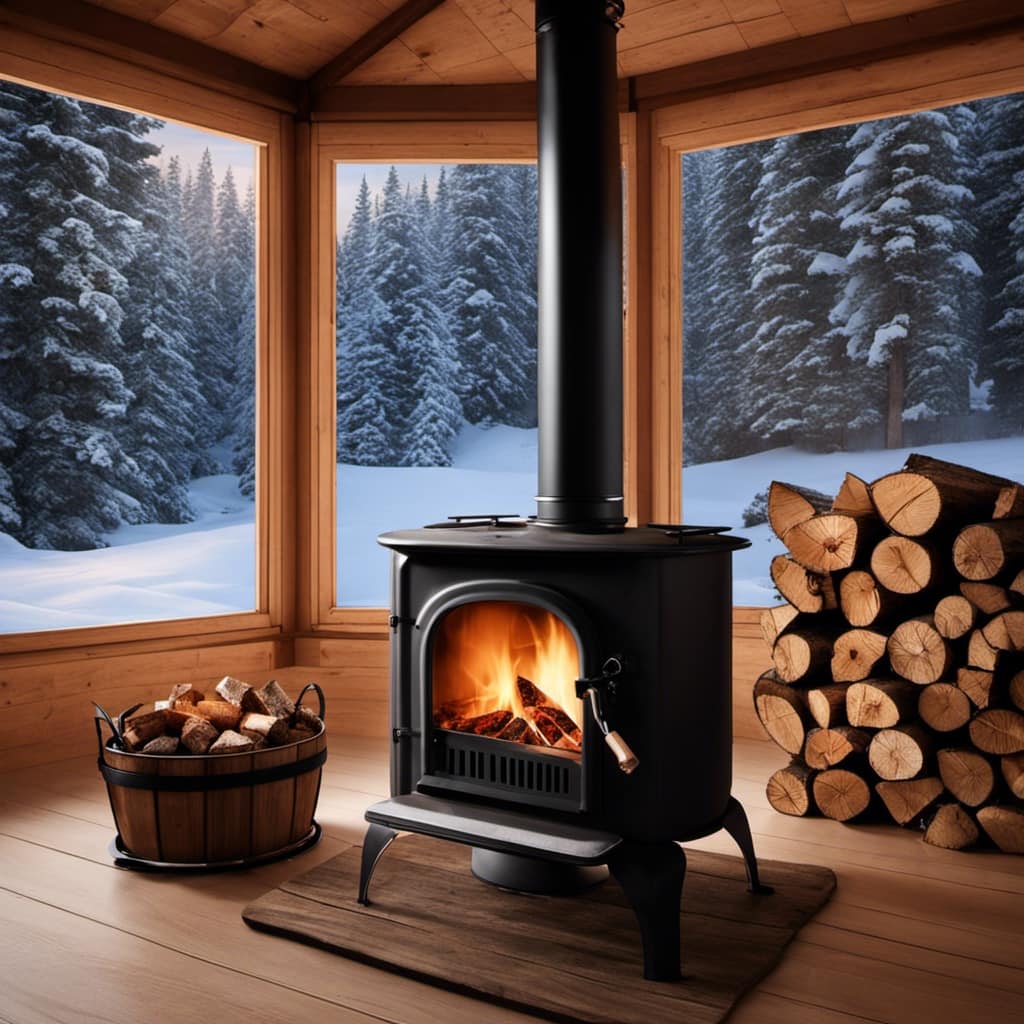
I have always appreciated the comforting warmth that my wood stove provides during the winter months, however, recently I have observed that the firebrick lining is beginning to display signs of wear and tear.
Knowing the importance of a properly functioning firebrick installation, I decided to tackle the task myself.
In this article, I’ll walk you through the steps I took to install firebrick in my wood stove, ensuring a safer and more efficient heating experience.
Let’s get started!
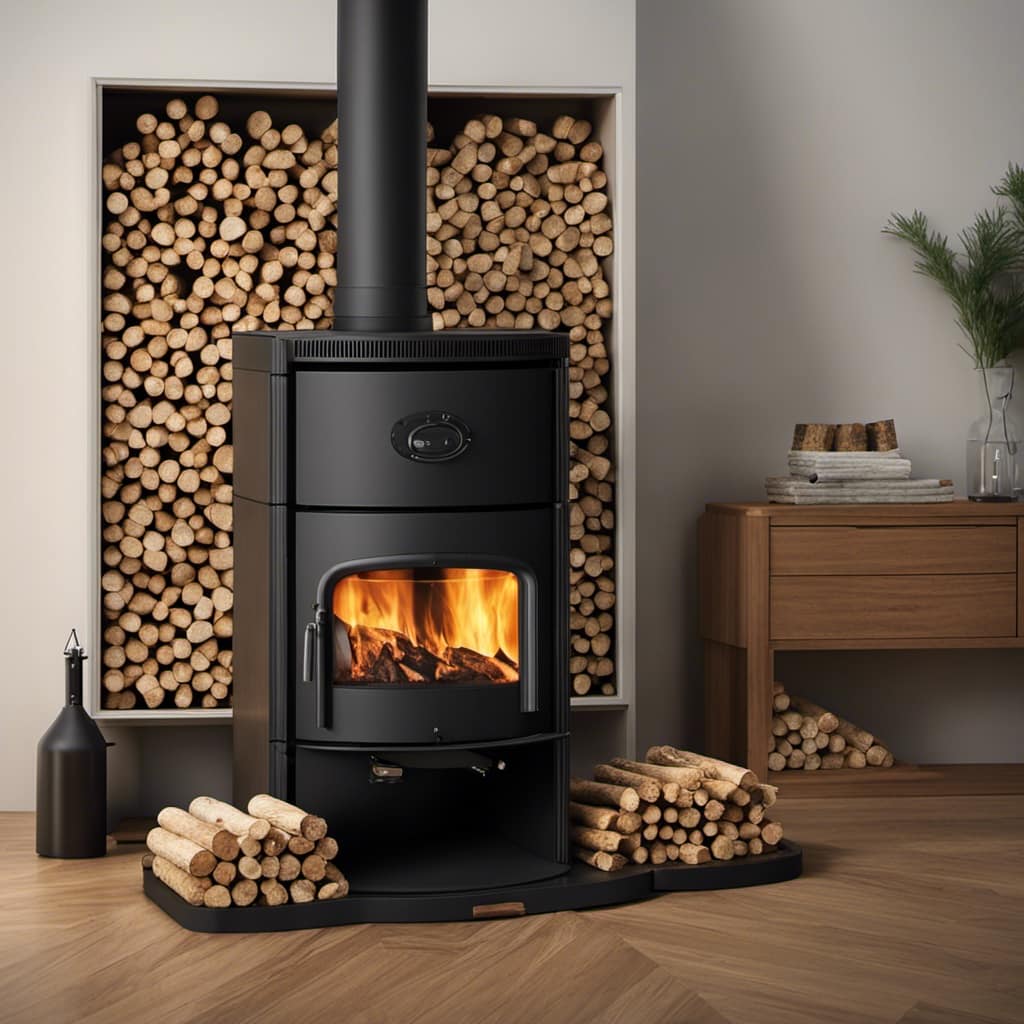
Key Takeaways
- Assess existing fire bricks for damage, cracks, or deterioration before installing new ones.
- Choose fire bricks made of dense clay that can withstand high temperatures.
- Measure the interior dimensions of the wood stove for proper positioning of the fire bricks.
- Use fire clay mortar or refractory cement to secure the fire bricks and create a strong bond.
Assessing Your Wood Stove’s Needs
I’m evaluating my wood stove’s needs before installing fire brick. Wood stove maintenance is crucial for ensuring its efficiency and safety.
When it comes to fire brick selection, there are a few factors to consider. Firstly, check the condition of the existing fire bricks. Look for any signs of damage, cracks, or deterioration. If the bricks are in poor condition, they should be replaced before installing new ones.
Secondly, consider the type of fire brick that best suits your wood stove. There are different materials available, such as clay, dense firebrick, and insulating firebrick. Each material has its own advantages, so it’s important to choose the one that suits your stove’s requirements.
Additionally, ensure that the fire bricks you choose are the correct size and shape to fit snugly into your wood stove.
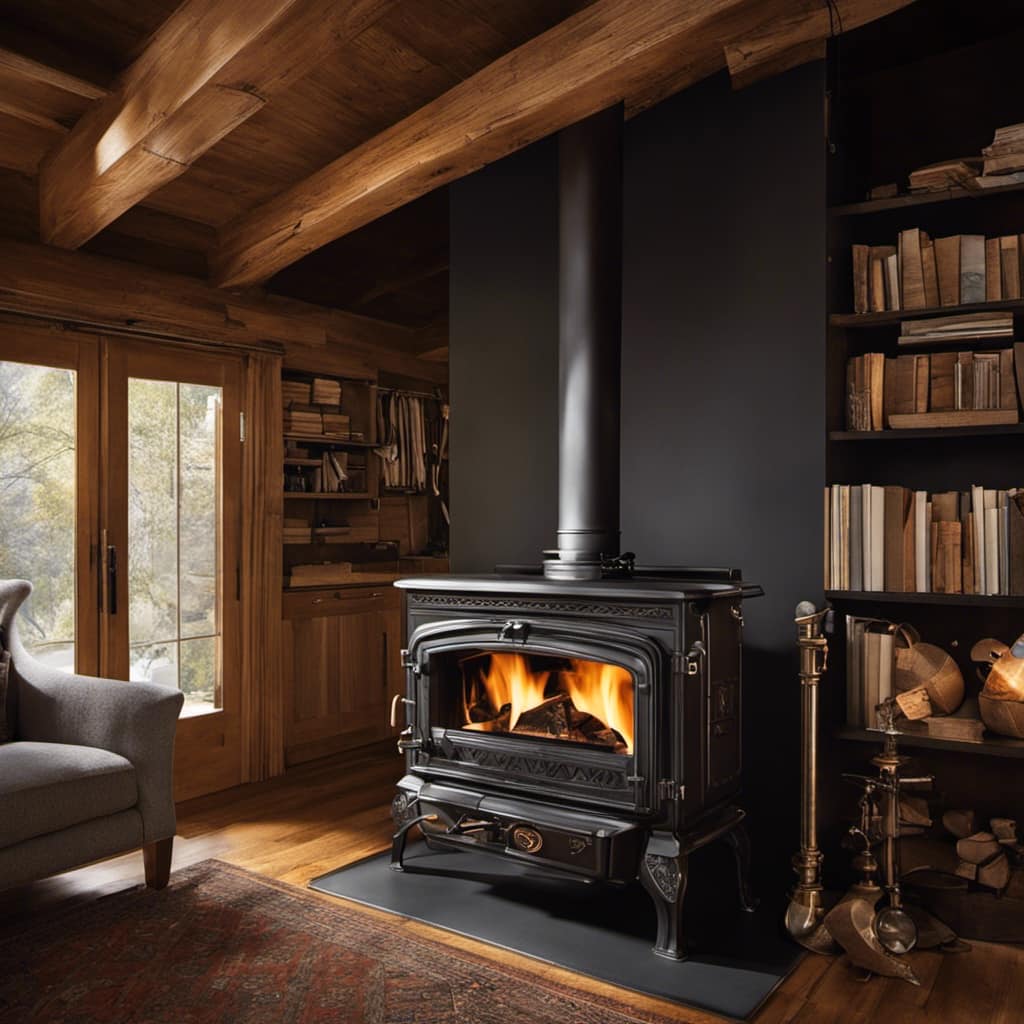
Gathering the Necessary Tools and Materials
To complete the task, I’ll need a hammer, chisel, safety goggles, fire clay mortar, and a tape measure.
Here’s what you need to know about installing fire brick in a wood stove:
-
Choosing the right fire bricks: Select fire bricks that are specifically designed for high temperatures. Look for bricks made of dense clay that can withstand the intense heat produced by the wood stove.
-
Proper positioning of fire bricks: Start by measuring the interior dimensions of your wood stove. Carefully position the fire bricks to create a tight seal, ensuring no gaps or spaces are left. Use the hammer and chisel to shape the bricks as needed to fit snugly into the stove.
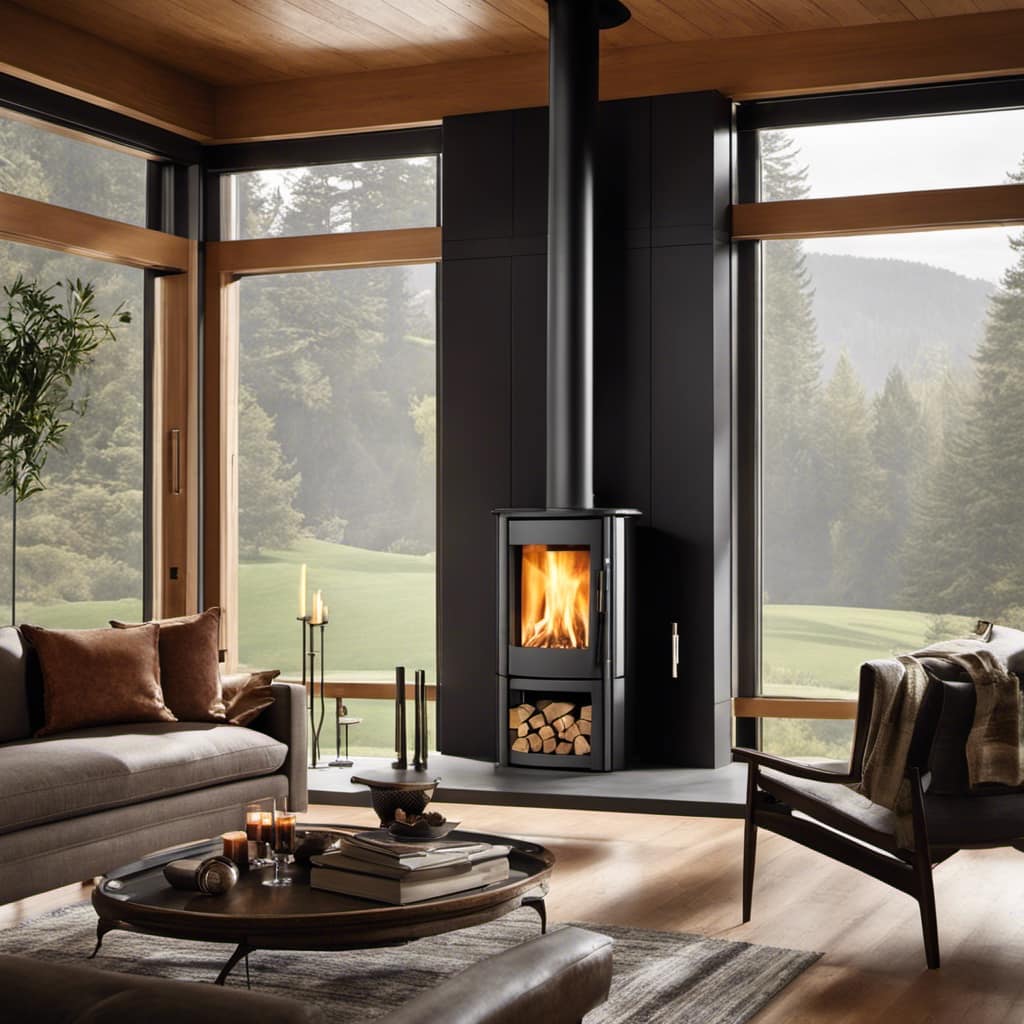
-
Secure with fire clay mortar: Apply fire clay mortar to the joints between the bricks to hold them in place and create a strong bond. Make sure to follow the manufacturer’s instructions for proper mixing and application of the mortar.
With the necessary tools and materials gathered, let’s move on to preparing the wood stove for installation.
Preparing the Wood Stove for Installation
Now that I have all the necessary tools and materials, it’s time to assess the condition of the wood stove and ensure it is ready for installation. Before proceeding, it’s important to take sizing considerations into account. Measure the dimensions of the intended space to ensure the wood stove fits properly. Additionally, evaluate the chimney and flue system to ensure it can handle the heat and exhaust properly.
To ensure safety during installation, it is crucial to follow a set of safety precautions. Make sure the area around the wood stove is clear of any flammable materials. Install a non-combustible hearth pad to protect the floor from heat and sparks. Place a fireproof barrier between the stove and any surrounding walls. It is also recommended to have a professional inspect the installation to ensure it meets all safety regulations.
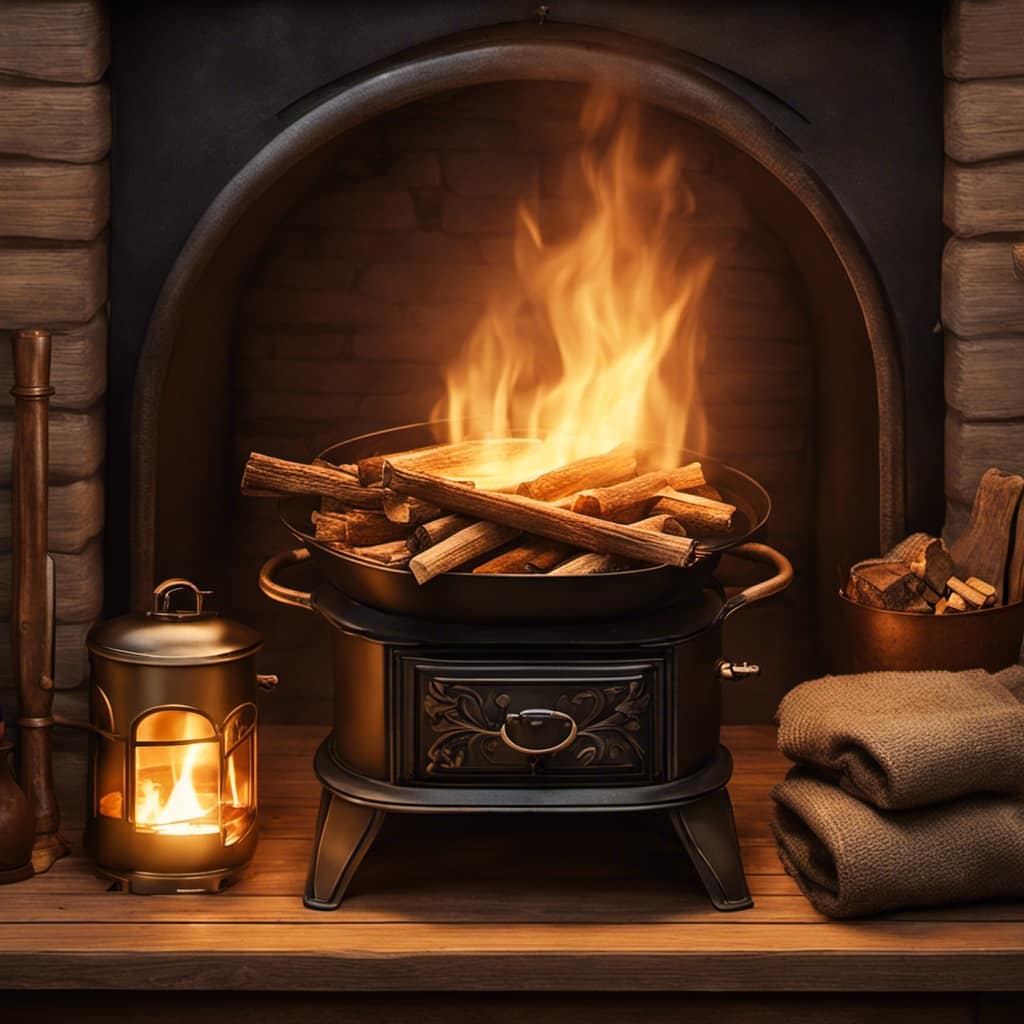
Now, let’s assess the condition of the wood stove using the following table:
| Aspect | Condition |
|---|---|
| Exterior | Good |
| Firebox | Clean |
| Door seal | Intact |
| Chimney | Clear |
Installing the Fire Bricks
After assessing the condition of the fire bricks, I found them to be in good shape and ready for installation. When it comes to installing fire bricks in a wood stove, there are a few key factors to consider.
Here are three important steps to follow:
-
Choosing the right fire bricks: It’s crucial to select fire bricks that are specifically designed for high temperatures. Look for bricks made from dense, heat-resistant materials such as clay or refractory cement.
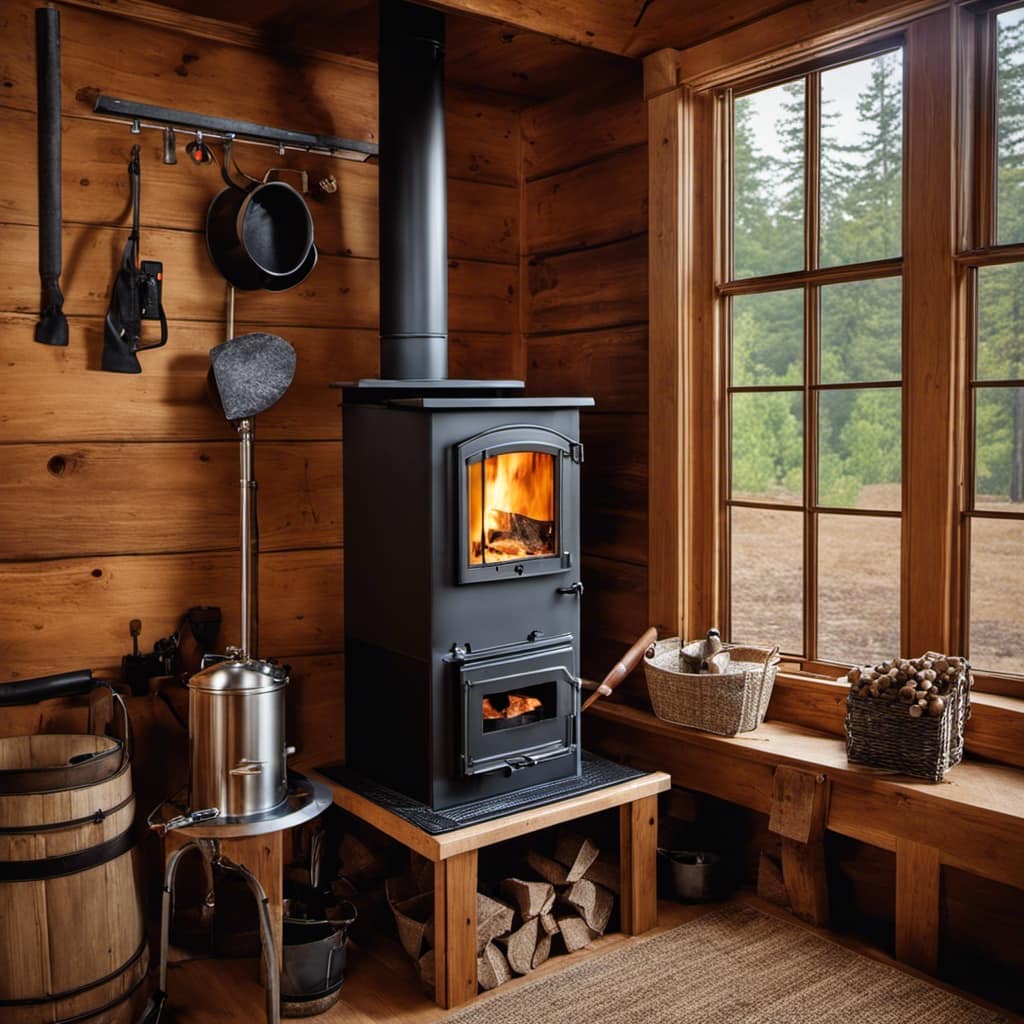
-
Proper placement of fire bricks: Start by removing any old or damaged bricks from the stove. Then, carefully position the new bricks to create a tight, secure fit. Make sure to leave space for expansion and contraction.
-
Securing the bricks: Once the bricks are in place, use a high-temperature mortar or refractory cement to secure them. Apply the mortar generously and evenly, ensuring that all gaps are filled.
Testing and Maintaining the Fire Brick Installation
I’m regularly monitoring the fire brick installation to ensure it remains in good condition. Proper testing techniques and troubleshooting tips are crucial for maintaining the integrity of the fire brick. One important aspect of testing is checking for any cracks or damage in the bricks. This can be done by visually inspecting the surface and running a finger along the edges to feel for any irregularities. Additionally, tapping on the bricks with a metal object can help identify any hollow or loose spots. It is also essential to monitor the temperature of the fire brick during use. Excessive heat can cause the bricks to deteriorate or crack. By keeping a close eye on the fire brick installation and following these testing techniques and troubleshooting tips, you can ensure the safety and efficiency of your wood stove.
| Testing Techniques | Troubleshooting Tips |
|---|---|
| Visual inspection | Check for cracks or damage in the bricks |
| Tapping on bricks | Identify hollow or loose spots |
| Monitor temperature | Avoid excessive heat to prevent deterioration or cracking |
Frequently Asked Questions
How Long Does It Take for the Fire Bricks to Fully Cure After Installation?
It typically takes about 24-48 hours for fire bricks to fully cure after installation. During this time, it’s important to avoid lighting fires in the stove to allow the bricks to properly set and harden.
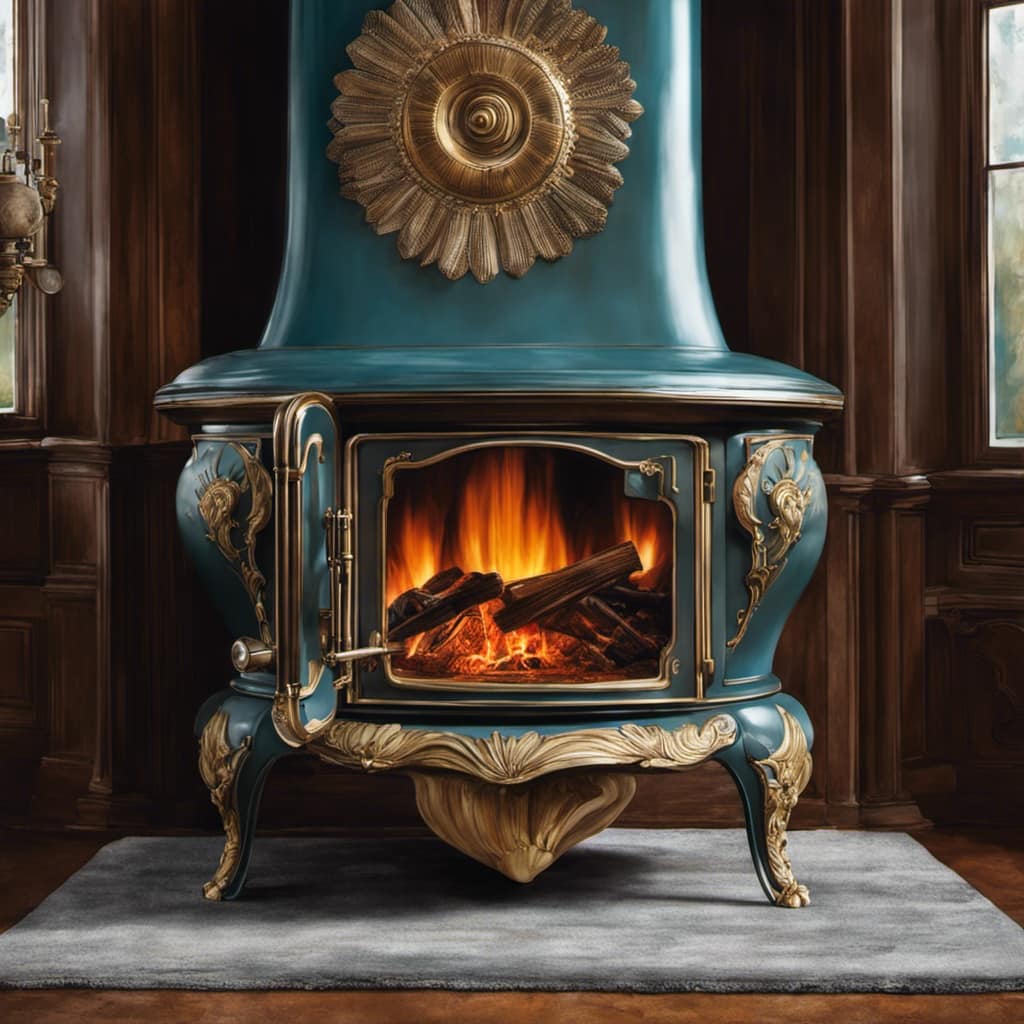
Can I Use Regular Bricks Instead of Fire Bricks in My Wood Stove?
Can regular bricks be used instead of fire bricks in a wood stove? While it is possible, it is not recommended. Fire bricks are specifically designed to withstand high heat and provide better insulation. Regular bricks may crack or crumble, compromising safety and efficiency.
Is It Necessary to Remove the Old Fire Bricks Before Installing New Ones?
It is necessary to remove the old fire bricks before installing new ones for optimal performance and safety. Regular bricks are not recommended as alternatives to fire bricks due to their inability to withstand high temperatures.
How Often Do I Need to Replace the Fire Bricks in My Wood Stove?
I should replace fire bricks in my wood stove when I notice signs of deterioration, such as cracks or crumbling. Regular fire brick maintenance is important to ensure the efficiency and safety of the stove.
Can I Install Fire Bricks in a Wood Stove That Has a Cracked Lining?
Yes, you can repair a cracked lining in a wood stove by installing fire bricks. However, if you’re looking for alternative materials, there are refractory cement and ceramic fiber boards that can also be used.
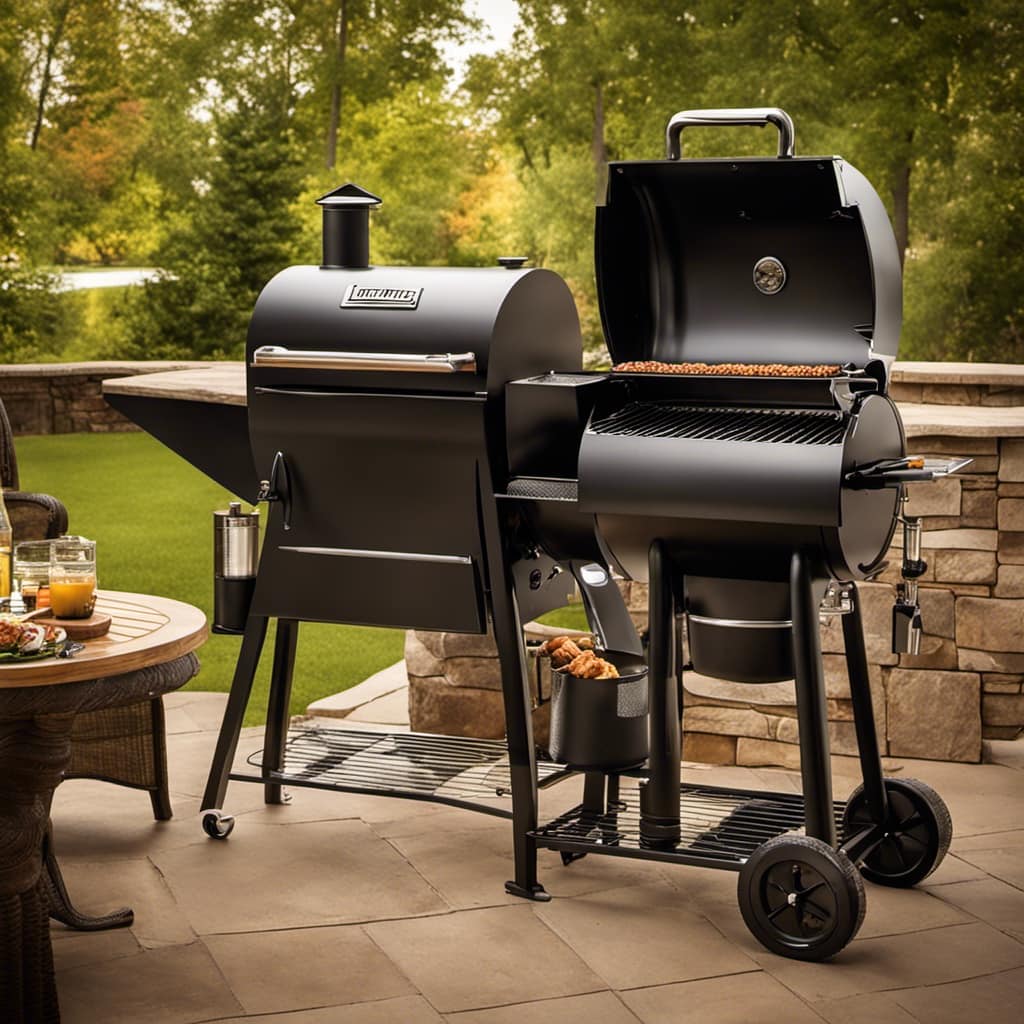
Conclusion
After following these steps and installing fire bricks in your wood stove, you can enjoy a more efficient and safer heating experience.
The fire bricks will help retain heat and protect the stove’s interior from damage.
Regularly testing and maintaining the fire brick installation will ensure that your wood stove continues to operate effectively.
Now you can relax and enjoy the warmth and ambiance of your wood stove with peace of mind.
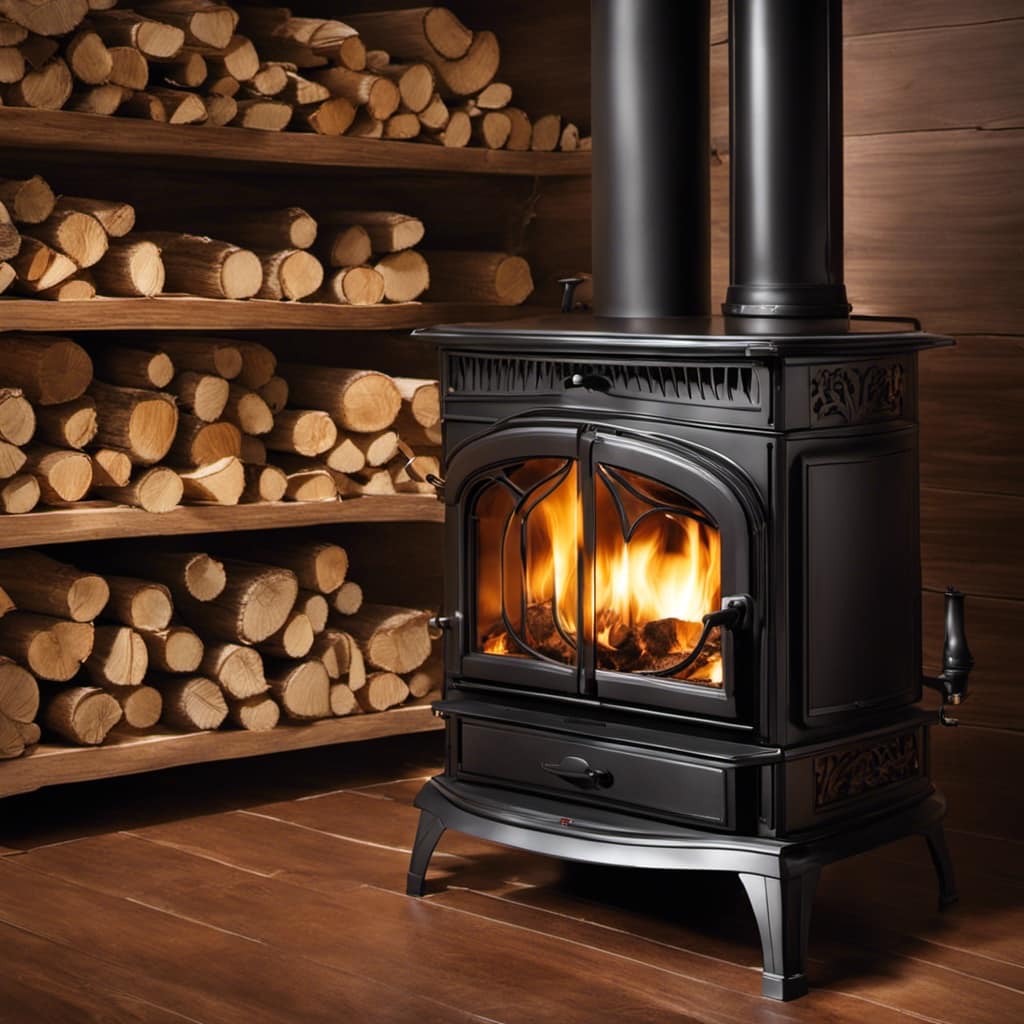
Growing up surrounded by the vast beauty of nature, Sierra was always drawn to the call of the wild. While others sought the comfort of the familiar, she ventured out, embracing the unpredictable and finding stories in the heartbeat of nature.
At the epicenter of every remarkable venture lies a dynamic team—a fusion of diverse talents, visions, and passions. The essence of Best Small Wood Stoves is crafted and refined by such a trio: Sierra, Logan, and Terra. Their collective expertise has transformed the platform into a leading authority on small wood stoves, radiating warmth and knowledge in equal measure.




